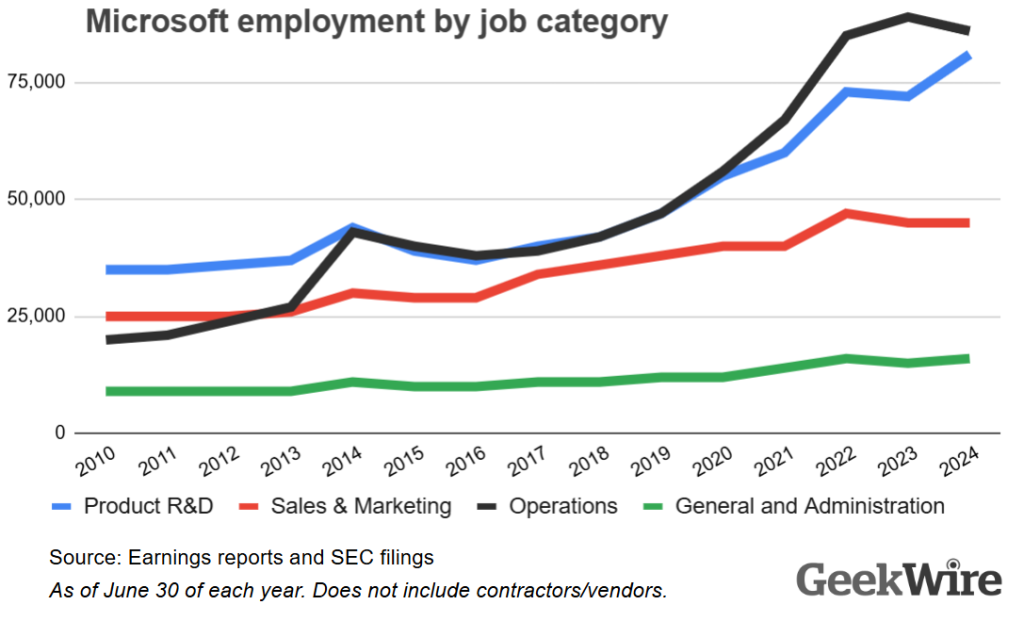Microsoft’s product-related research and development roles have seen a significant increase, rising by more than 12% to 81,000 positions in the past year. This growth is attributed to the company’s focus on developing and releasing new AI products and technologies. The acquisition of Activision-Blizzard has also played a role in reshaping Microsoft’s global workforce. However, despite growth in product R&D roles, the number of operations roles at Microsoft has declined by over 3% to 86,000 positions. This category includes product support and consulting services, datacenter operations, and manufacturing and distribution. Sales and marketing roles have remained flat at 45,000, while general and administrative positions have seen a slight increase to 16,000.
Overall, Microsoft’s global employment has increased by 3% to 228,000 as of June 30. This is still below its peak of over 230,000 employees in late 2022, prior to announcing layoffs of 10,000 people in early 2023. The company is trying to manage operating expenses, including employment-related costs, to preserve its operating margins while also increasing capital spending on infrastructure to meet the demand for AI technologies. To reward employees, Microsoft has announced a special one-time cash award equivalent to an additional 10% to 25% of the value of their annual bonuses for the recently completed fiscal year.
The unveiling of these figures was part of Microsoft’s latest Form 10K filing with the Securities and Exchange Commission, combined with records showing the company’s historical employment trends. The increase in product R&D roles reflects Microsoft’s commitment to innovation in the AI space and its efforts to stay ahead in the technology industry. The company’s investments in research and development positions demonstrate its dedication to creating cutting-edge products and services for its customers. This data also sheds light on the impact of the Activision-Blizzard acquisition on Microsoft’s workforce structure.
As Microsoft continues to navigate the current economic environment, it aims to balance growth opportunities with cost management. By increasing investments in infrastructure to support AI initiatives while controlling operating expenses, Microsoft is positioning itself for future success in the rapidly evolving technology sector. Through strategic decisions on workforce composition, including adjustments in various roles within the company, Microsoft is adapting to industry trends and customer demands. The company’s ability to innovate and streamline operations will be crucial in maintaining its competitive edge and driving continued growth.
Moving forward, Microsoft will likely continue to prioritize research and development roles to drive innovation and develop new technologies. The company’s focus on AI and emerging technologies positions it as a key player in shaping the future of the technology industry. By leveraging its workforce and making strategic investments, Microsoft is setting the stage for continued success and growth in the years to come. As the company evolves and adapts to changing market dynamics, its emphasis on research and development will be vital in driving innovation and maintaining a leadership position in the global technology landscape.


